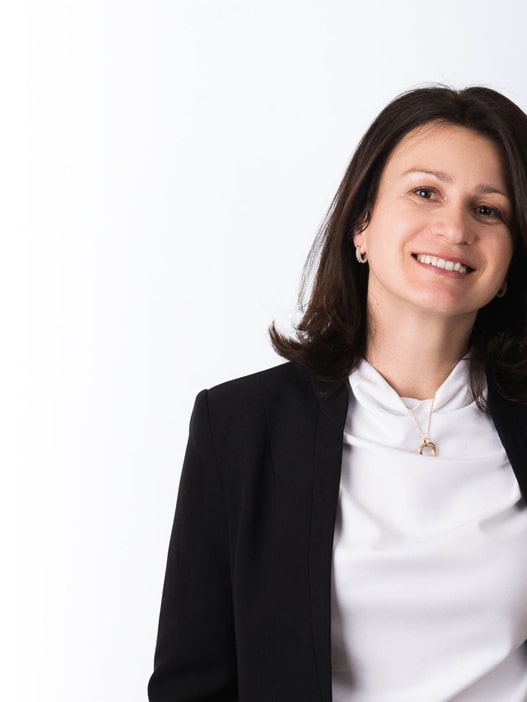Here to stay or a flash in the pan?
SPACs as an alternative to IPOs
Special purpose acquisition companies (SPACs) have become one of the most discussed topics in the equity market in recent years. These “blank cheque” companies are essentially a shell company formed by investors to raise money through an initial public offering (IPO) without having yet identified a specific acquisition target. In this article, you will learn:
- what SPACs are
- how they operate
- their advantages and disadvantages
- and where the current market is heading.
Also covered is the intended placement of the first SPAC on the Prague Stock Exchange in 2021.
A SPAC is a publicly-listed company with no operations, no assets – except for capital from its investors – whose purpose is to identify and purchase a private company, merge with this company via a so-called reverse merger¹
and thereby allow the acquisition target to have publicly-listed stock.
The number of newly formed SPACs and the amount capital raised by them through IPOs since 2019 is skyrocketing² which is why we would like to focus on how they work and where the market is headed.
1. What is a SPAC and how does it operate?
SPACs are usually established by a group of investors, called sponsors. They raise capital through an IPO from other investors to potentially acquire an existing company, usually by issuing warrants and common stock shares. A warrant gives the holder the right to buy more stock at a fixed price at a later date. Investors who participate in the SPAC IPO are attracted to the opportunity to exercise the warrants so they can obtain more common stock shares once the acquisition target is identified.
So investors don’t know what they are getting for their money?
When a SPAC is listed, the sponsors usually do not have a specific target in mind to acquire, or they do not disclose it, in order to avoid the extensive paperwork and disclosures required by the Stock Exchange.
The initial underwriters and investors typically have no idea how the sponsors will spend their money.
So early investors are basically relying on the sponsors’ reputation in the hope of snagging a good investment. This uncertainty is why most SPACs trade at only $10 a share.
Of course, the assumption is that when, and if, they acquire a company and take it public, the share prices will significantly increase. At this point, investors can cash out, or hold on for longer-term gains.
In practice, around 97% of the capital raised in an IPO goes into the escrow account for a future acquisition, while the rest is held in reserve to cover IPO underwriting fees and SPAC operating expenses, including due diligence, legal, and accounting fees.
As a next step, the SPAC’s sponsors search for a potential acquisition target.
SPACs don’t live forever
SPACs have a specified period to identify an acquisition target and close the deal, usually two years.
If the SPAC sponsors identify a potential target company, they issue a formal announcement. Then, additional due diligence is performed, and the acquisition structure is negotiated. The next step is a vote of the SPAC shareholders on whether they approve the acquisition or wish rather to liquidate their shares in the SPAC for a pro-rata portion of what remains in the escrow account. The shareholders may also sell shares on the secondary market.
If most shareholders approve the acquisition, it goes through, as long as the number of shareholders who vote to liquidate is below a specified threshold.
If a majority of shareholders vote against the acquisition, then the escrow account is closed, and the proceeds are returned to the shareholders.
Once the acquisition is approved and the transaction is closed, the acquired company is listed on the stock exchange as a result of the reverse merger with the SPAC.
2. Advantages of SPACs
Cutting through the paperwork
It is much easier, less burdensome and less time consuming for private companies to go public via a SPAC acquisition than through an actual IPO. In practice, the financial markets’ receptiveness to new public offerings varies depending on economic conditions and investors’ risk appetite.
A SPAC is already public; a reverse merger allows a private company to become public when the situation is perhaps not in favour of its IPO. Due to a SPAC’s lack of business operations at the time of prospectus approval, the prospectus disclosure is brief compared to that of a traditional IPO.
SPAC acquisitions are also attractive to private companies because their founders and other major shareholders can sell a higher percentage of their ownership in a reverse merger than they could with an IPO.
The private company founders can also avoid the lock-up periods for selling newly public shares that are required for IPOs.
The benefits for investors are that the shares of SPACs are easily obtainable by smaller investors (costing usually $10 per share), and this is accompanied by the opportunity to invest in booming areas.
3. Disadvantages of SPACs
What is your risk appetite?
SPAC investors are purchasing a “pig in a poke” since they do not know at the outset what they are investing in.
The gap between purchasing the shares and the actual acquisition can be quite lengthy. The investors’ money is locked in an escrow account for some time without the investors being able to access it. If the acquisition does not materialise, the funds are returned, but idling capital for that long may be costly.
Of course, also the performance of the acquired company may not end up being profitable, and the SPAC investment would then clearly not be worth it.
4. SPACs as alternative investment funds
SPACs need to fall within an exemption to the AIFMD
One of the key regulatory considerations when creating a SPAC is whether such a structure falls under the scope of the EU regulation on alternative investment funds (i.e. the so-called AIFMD, which is applicable across the entire European Union). This stems from the fact that such a structure resembles the investment fund vehicle as it collects the money from public investors and invests these funds in the relevant investment asset.
It is therefore vital for any SPAC project to structure it appropriately in order to be able to rely on exemptions provided by the AIFMD.
In particular, what is important are the exemptions for companies operating outside of the financial sector or holding companies. Otherwise, the structure would be permissible only under the management of the authorised management company with an appropriate license in any EU member state.
Much is still unknown on the regulatory side
Since there is currently no relevant regulatory guidance in relation to SPACs across the EU, the approach of local regulators and their interpretation of the AIFMD may vary. The sponsors should be prepared to discuss the intention to create a SPAC with the local competent authority well before the contemplated project is scheduled to be launched.
5. SPARC as the new alternative
Is there an even better model out there?
The regulatory concerns regarding SPACs inspired sponsors in the US to create a new type of structure: the so-called special-purpose acquisition rights company or the SPARC.
Unlike a SPAC, a SPARC does not require its investors to put cash up front until the relevant target is acquired. Instead, a SPARC issues rights to the investors.
When the acquisition target is found, such rights allow the investors to invest the relevant amount in exchange for the shares issued by the target company. The new structure removes certain regulatory concerns, and it provides for greater efficiency, as the investors’ funds are not locked up for a given period. This may cause SPARCs to become more popular in the future, not only in the US.
6. Early birds in CEE
Wood & Company investment group, which operates investment banking in Eastern Europe and advises companies on stock market transactions, plans to place the first SPAC on the Prague Stock Exchange in the autumn of 2021.
Perhaps the beginning of a regional trend
If this transpires, it would be the first listing of a company of this type on the stock exchange in Central and Eastern Europe. The transaction will be aimed at merging with a smaller company in the field of technology, the gaming industry, e-commerce or in the field of engineering. The target company should then use the obtained funds for its regional expansion. If it is successful, the Wood & Company team intends to continue with similar transactions. Currently, according to publicly available information, Wood & Co. is in discussions with the relevant regulator (the Czech National Bank) and needs to analyse this topic from a legal perspective, as Czech law does not yet regulate SPACs.
7. Conclusion
Expect to see more SPACs on the way
We consider SPACs as a quite risky but potentially profitable way for smaller investors to obtain stock early in an IPO before the shares start increasing due to high demand. The number of SPACs has been growing rapidly over the last two years, and we expect further growth, not only due to rising investment following the pandemic, but also due to other factors as well. Currently, SPACs are mostly used in the US, and they are rather new in the UK. There are more than 400 SPAC projects around the world, many of which are backed by major financiers or promoted by celebrities such as tennis player Serena Williams.
Still many unresolved questions though
In Europe, SPACS still have way to go before they could be considered an established structure. The specifics of SPACs and similar structures can vary depending on the corporate law of the relevant jurisdiction, the stock exchange rules as well as market considerations. One aspect to watch going forward will be whether and how regulators on the EU or national levels will undertake initiatives to address this developing trend.
¹ Reverse merger (also reverse takeover or reverse IPO) is a process whereby private companies can become publicly-traded companies without going through an IPO.
² https://spacinsider.com/stats/?utm_source=markets&utm_medium=ingest

